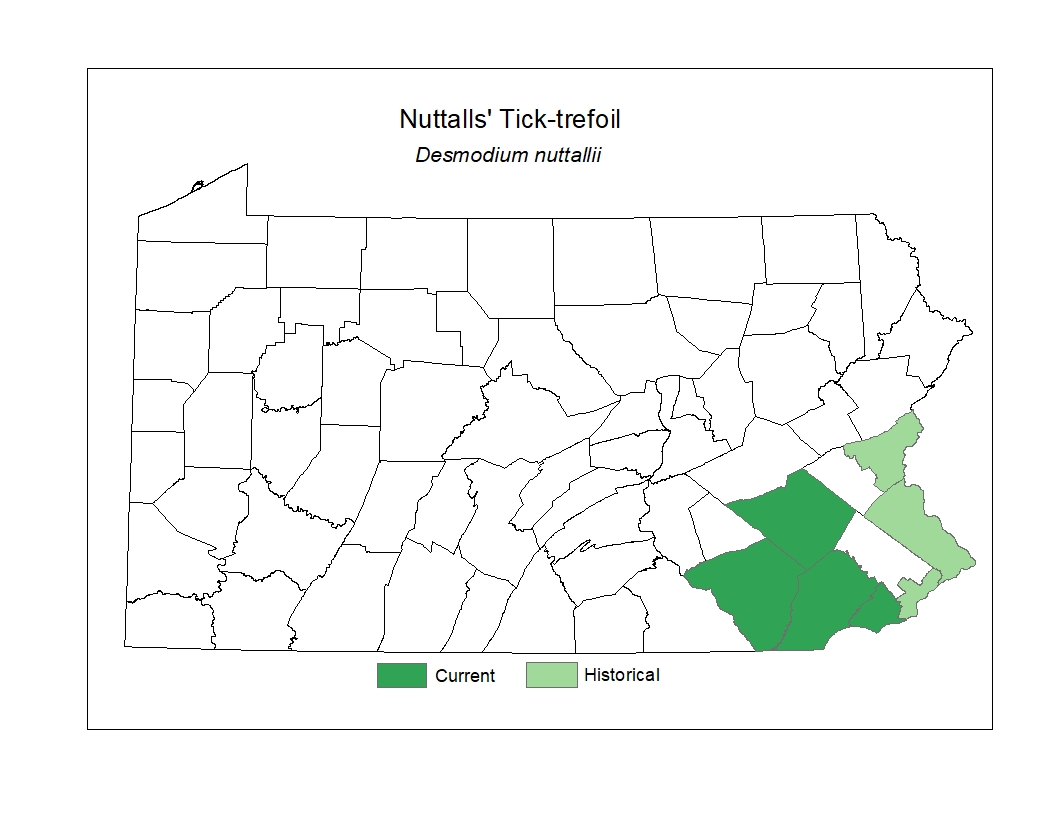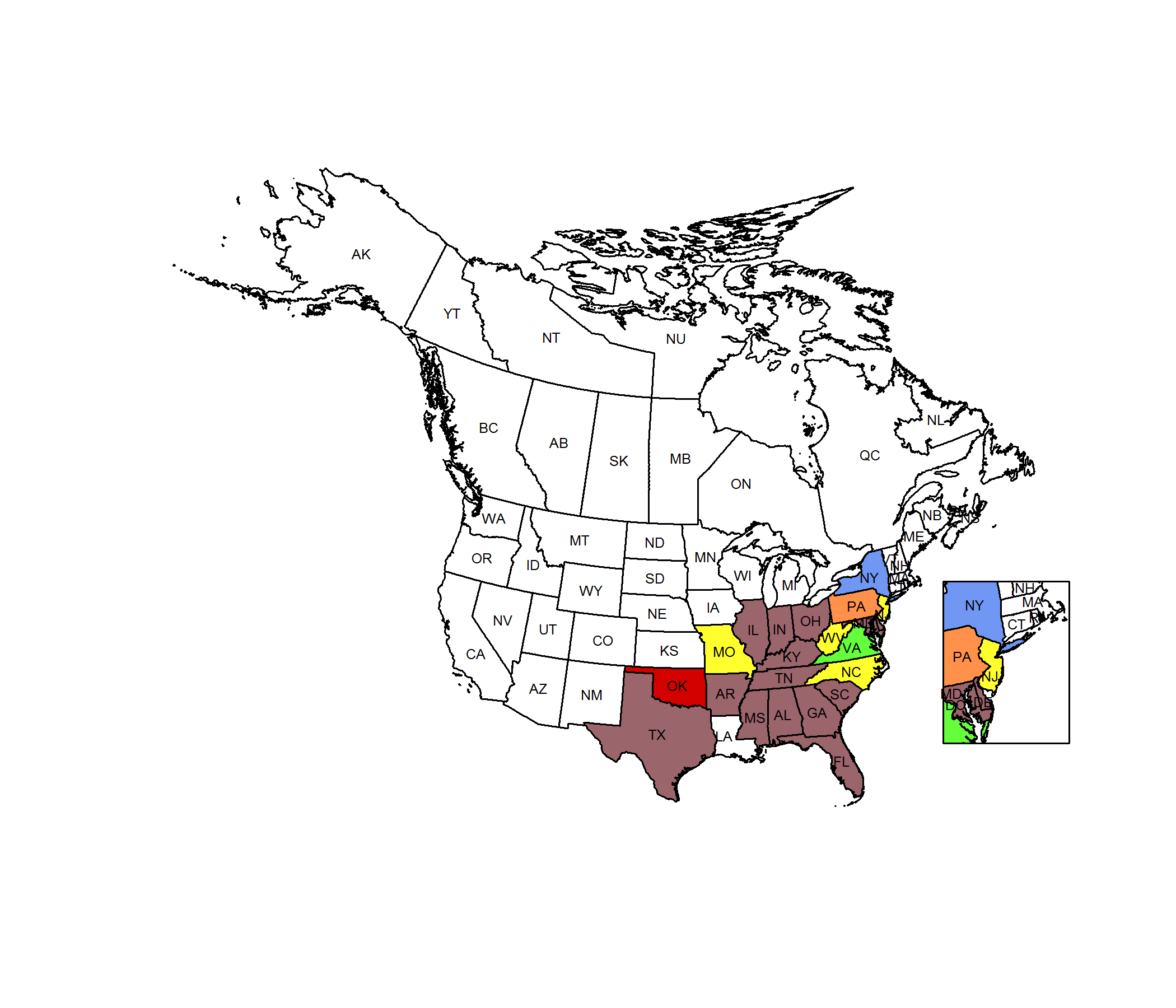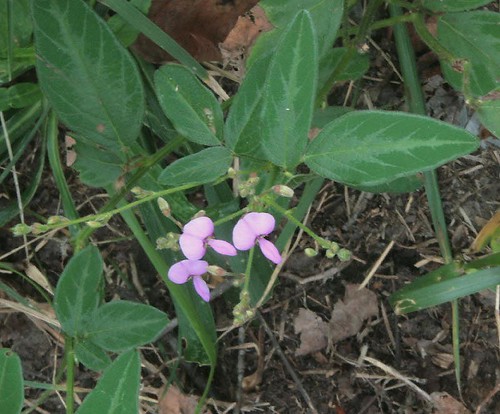 Species Factsheets
Species Factsheets
Desmodium nuttallii
Nuttall's Tick-trefoil
State Status: TU
PBS Status: Pennsylvania Threatened (PT)
Federal Status:
Global Rank: G5
![]() rank interpretation
rank interpretation
State Rank: S2
Description
Tick-trefoils (genus lt;emgt;Desmodiumlt;/emgt;) are perennial herbs that receive their common name from the combination of the 3 untoothed leaflets making up each leaf and the flattened and pod-like fruit, which is covered with tiny hook-like hairs and divided into 1-seeded sections, which at maturity detach easily and readily stick (“like a tick”) to clothing or hair. Seventeen species have been documented in Pennsylvania, and their identification is difficult, as it relies on relatively inconspicuous or transient features. Nuttall's tick-trefoil is one of the more distinctive species, primarily because the stem and leaves, particularly the lower sides of the leaves, usually have a velvety covering of hairs, which is not present in most other species of the genus. The pink or purple flowers, appearing in summer, have 5 petals and are about ¼ inch (6 mm) in length. The fruits in this species have from 2-4 segments, with the upper margin of the each segment tending to be convex in outline and the lower margin of each segment tending to be rounded or obtusely angled.
Rank Justification
Imperiled in the nation or state because of rarity due to very restricted range, very few populations (often 20 or fewer), steep declines, or other factors making it very vulnerable to extirpation from the nation or state.
Habitat
It grows on relatively dry conditions on open slopes and banks and in clearings, fields, thickets, and open woods.
Survey Dates
Flowers July - September
Distribution
Nuttall's Tick-trefoil ranges from New York south and southwest into Florida and Texas. In Pennsylvania, it has been documented historically mostly in the southeastern counties.

Management
The viability of populations of Nuttall's Tick-trefoil may require maintaining early successional conditions and controlling invasive species. Active management, such as periodic mowing, may be needed to create the proper successional stage and ecological conditions for this species to thrive.
Conservation Status Map

NatureServe. 2017. NatureServe Explorer: An online encyclopedia of life [web application]. Version 7.1. NatureServe, Arlington, Virginia. Available https://explorer.natureserve.org.
- NatureServe. 2018. NatureServe Explorer: An online encyclopedia of life [web application]. Version 7.1. NatureServe, Arlington, Virginia. Available at https://www.natureserve.org/explorer
- Pennsylvania Natural Heritage Program. 2018.
- Rhoads, A.F. and W.M. Klein, Jr. 1993. The Vascular Flora of Pennsylvania. American Philosophical Society, Philadelphia, Pennsylvania. Rhoads, A.F. and T.A. Block.
- 2007. The Plants of Pennsylvania: An Illustrated Manual. 2nd edition. University of Pennsylvania Press, Philadelphia, Pennsylvania.







